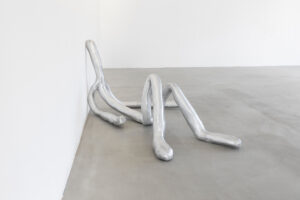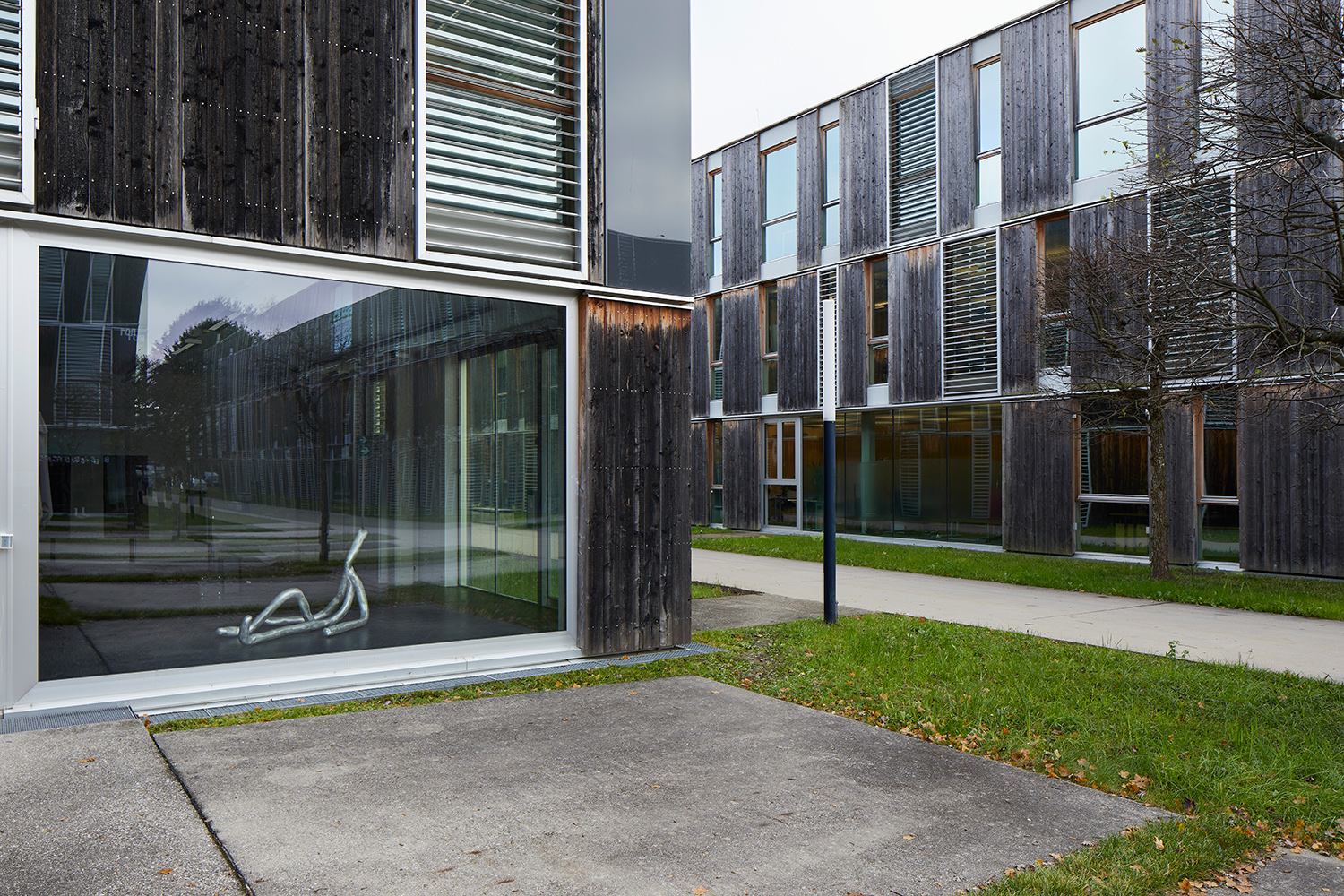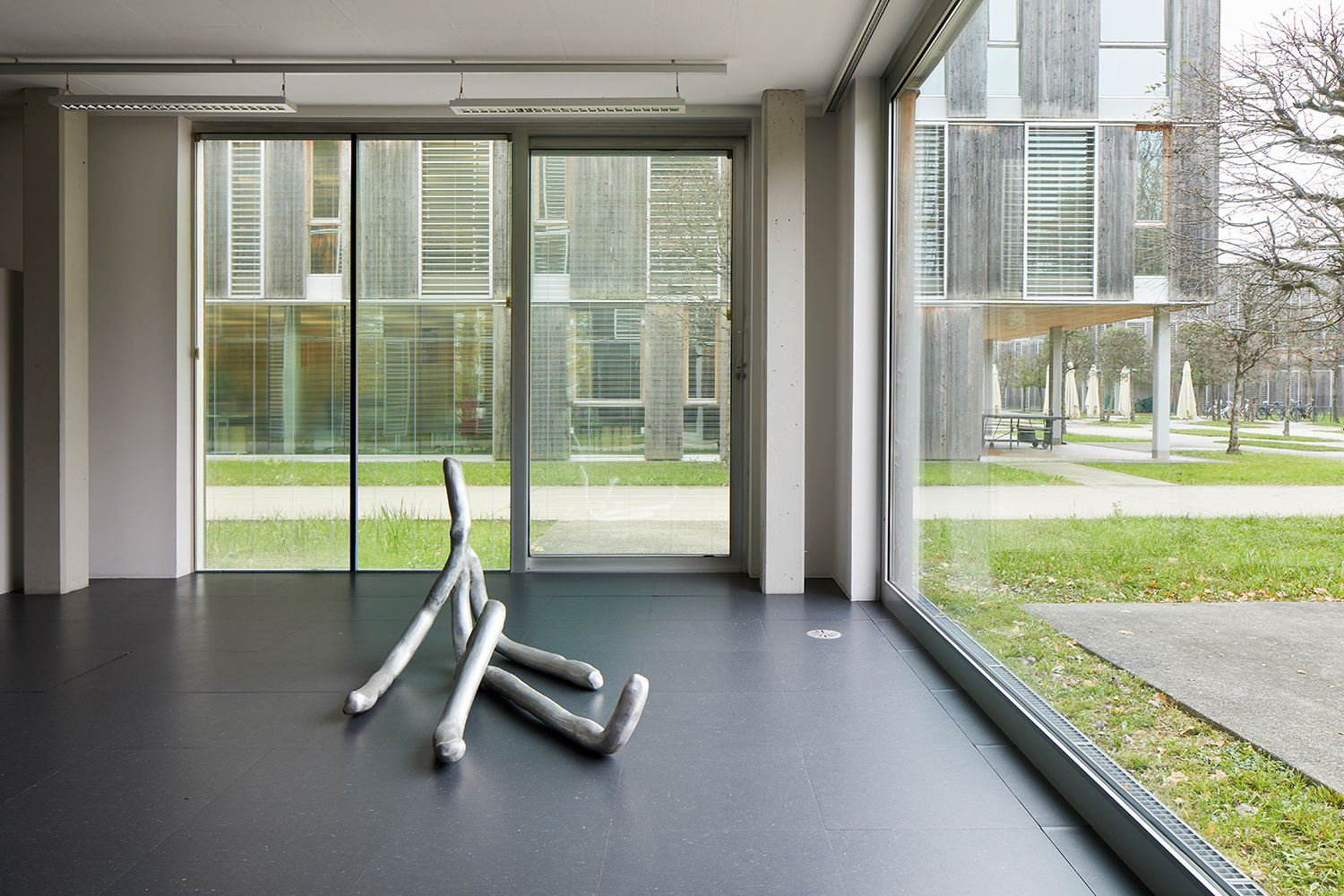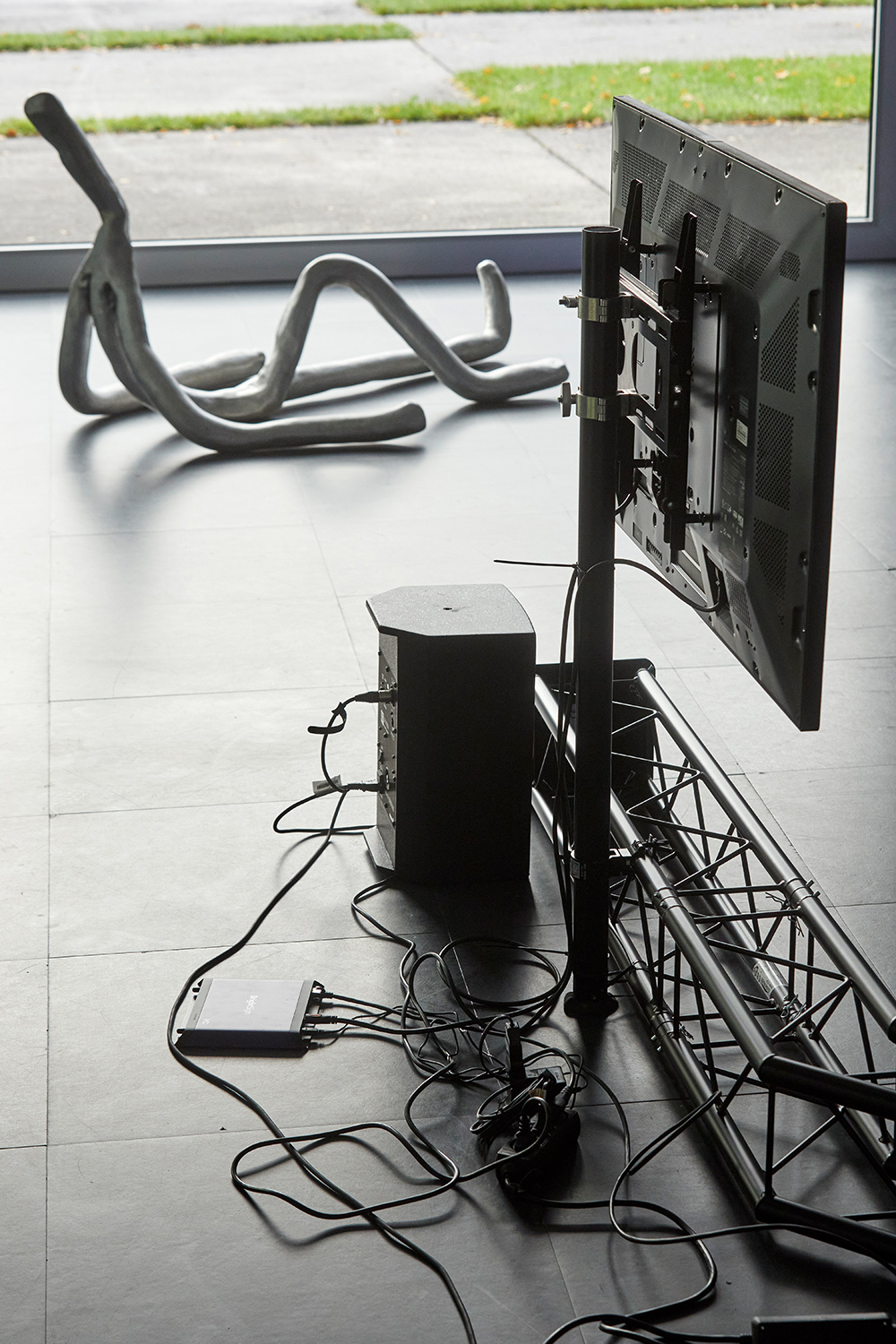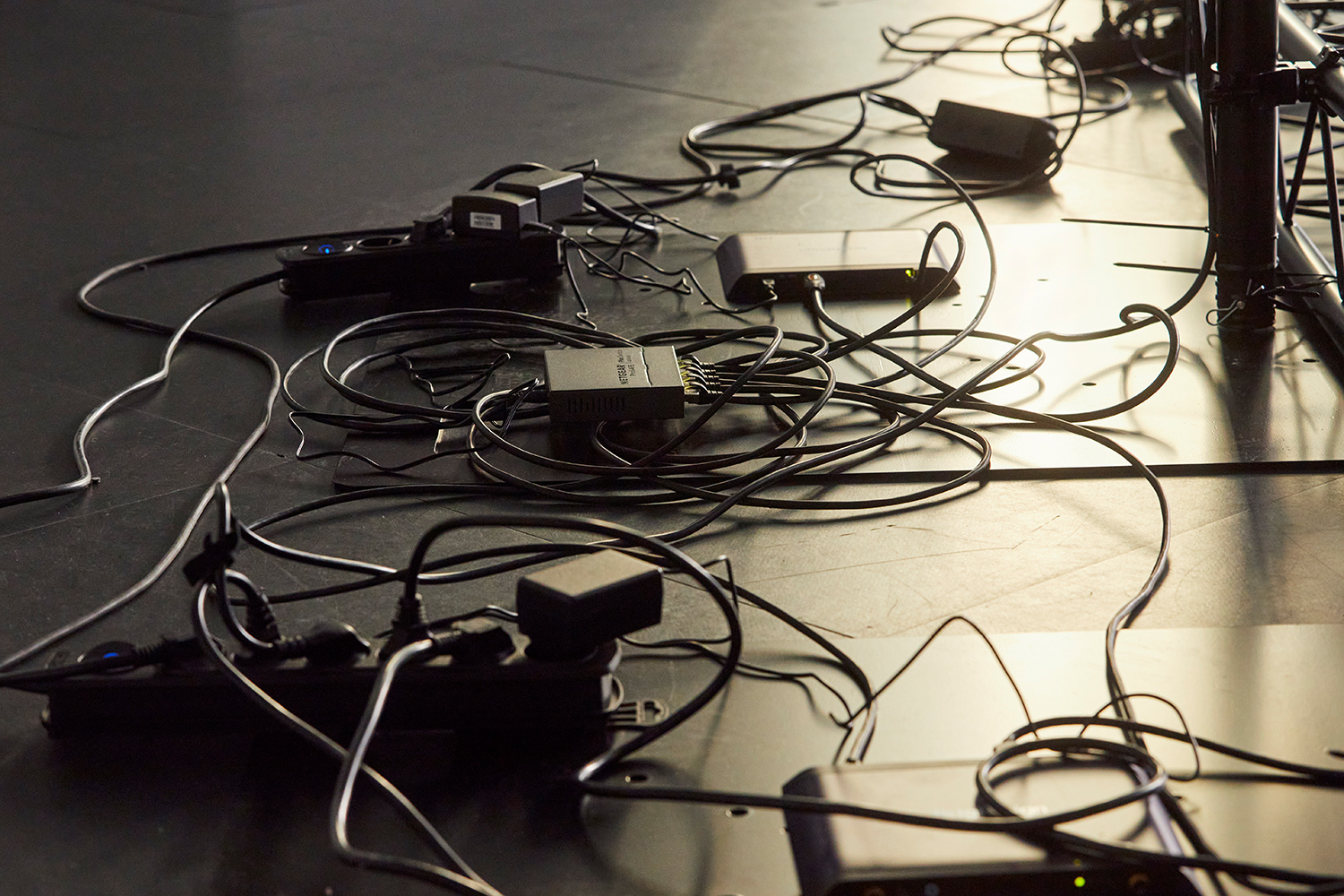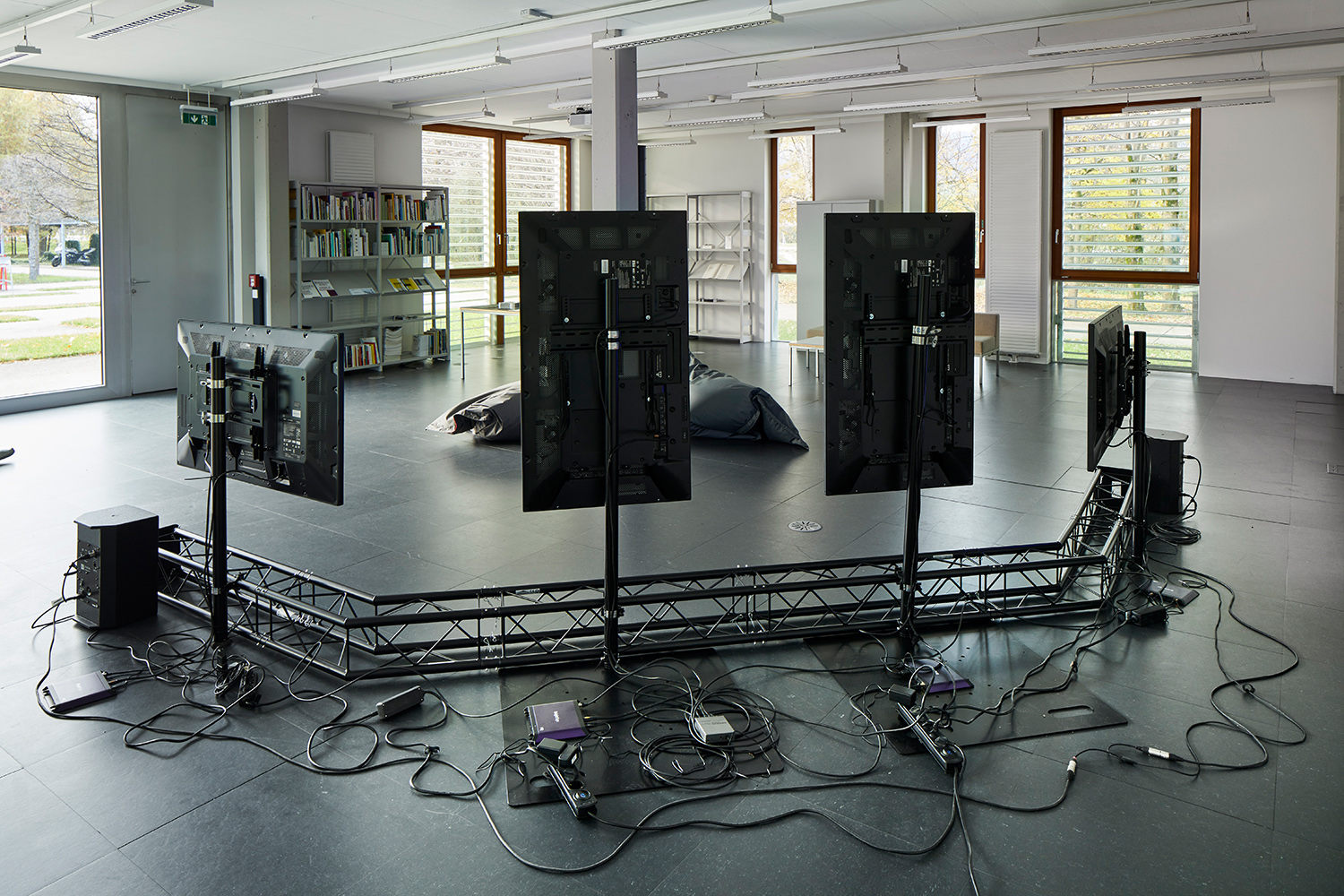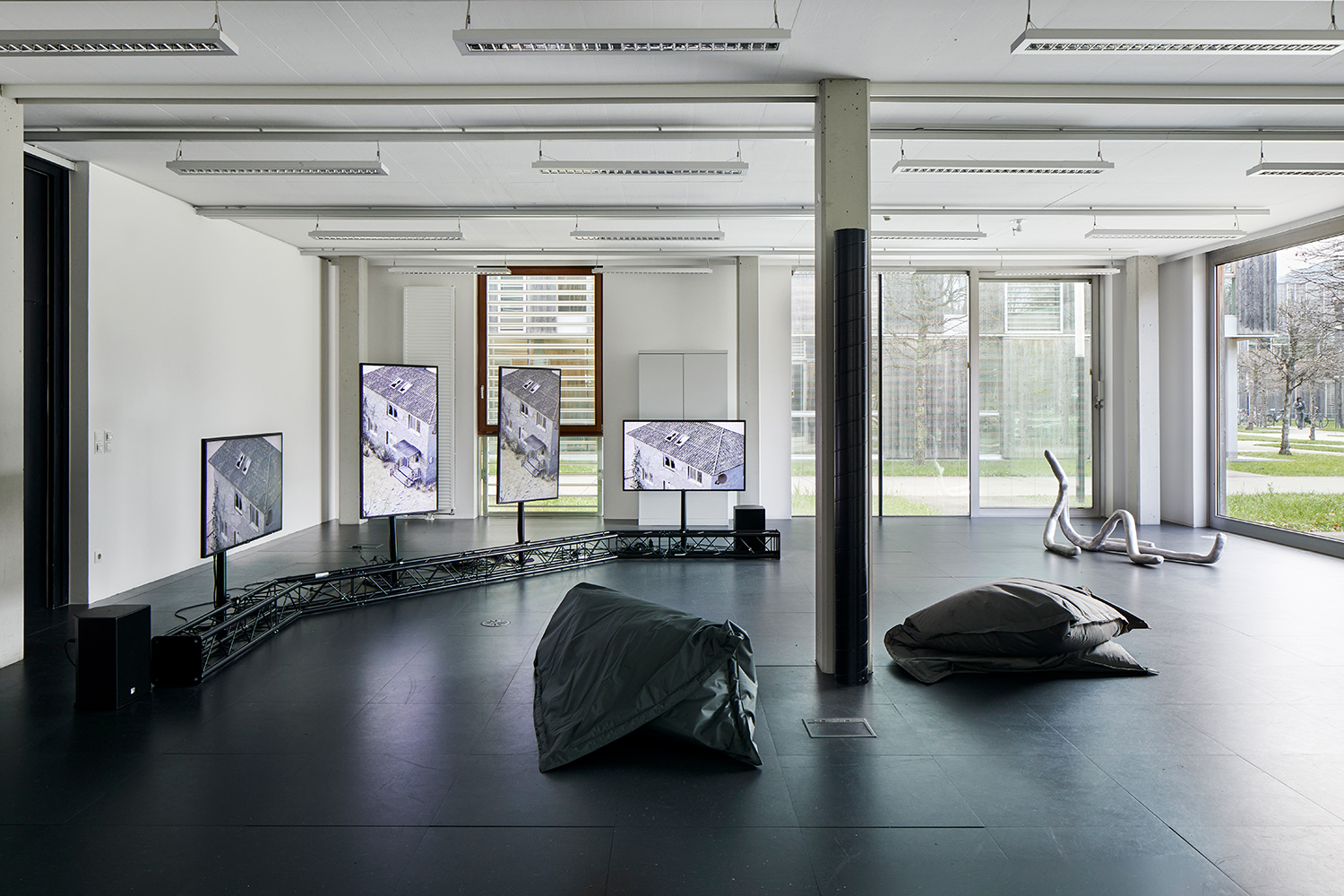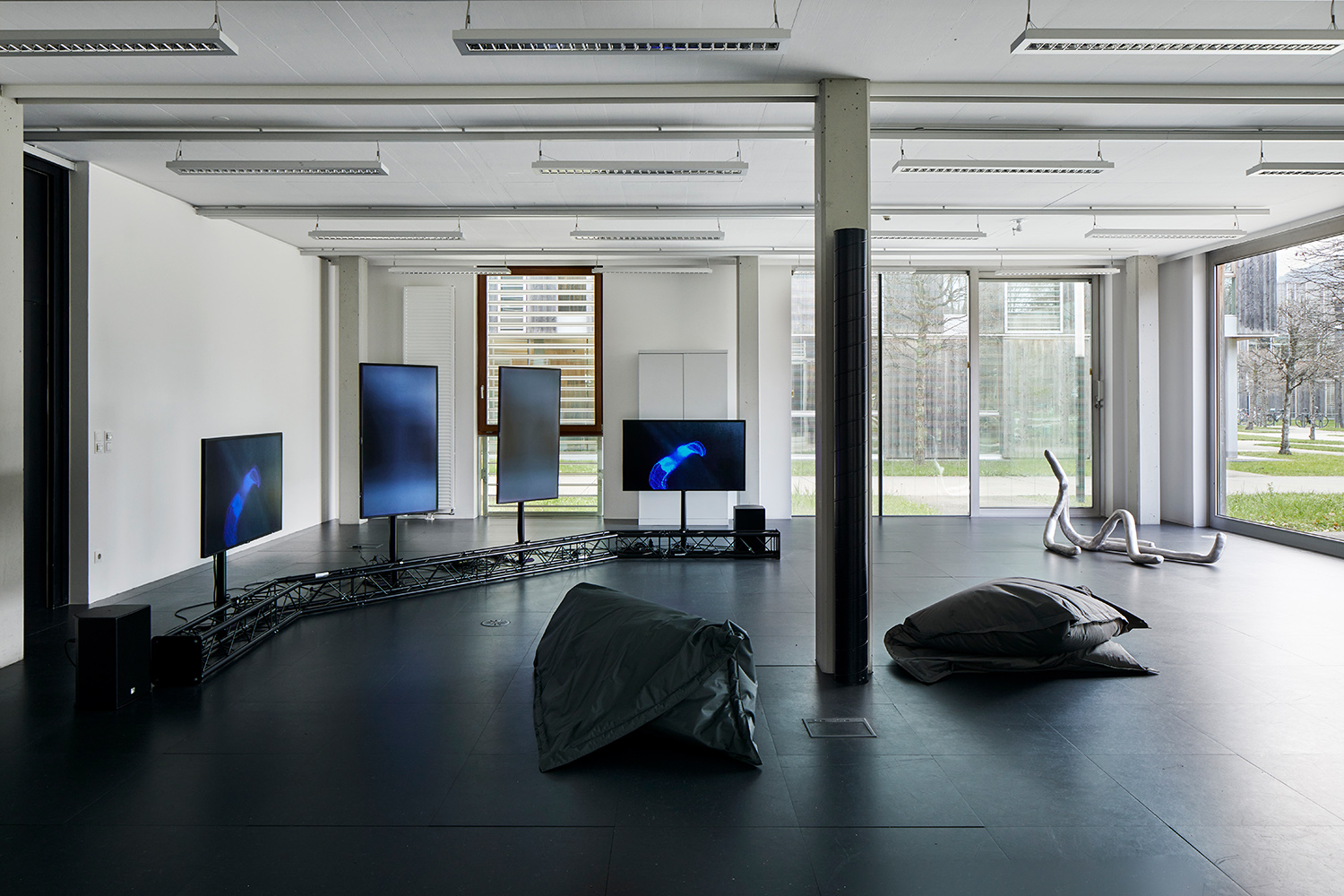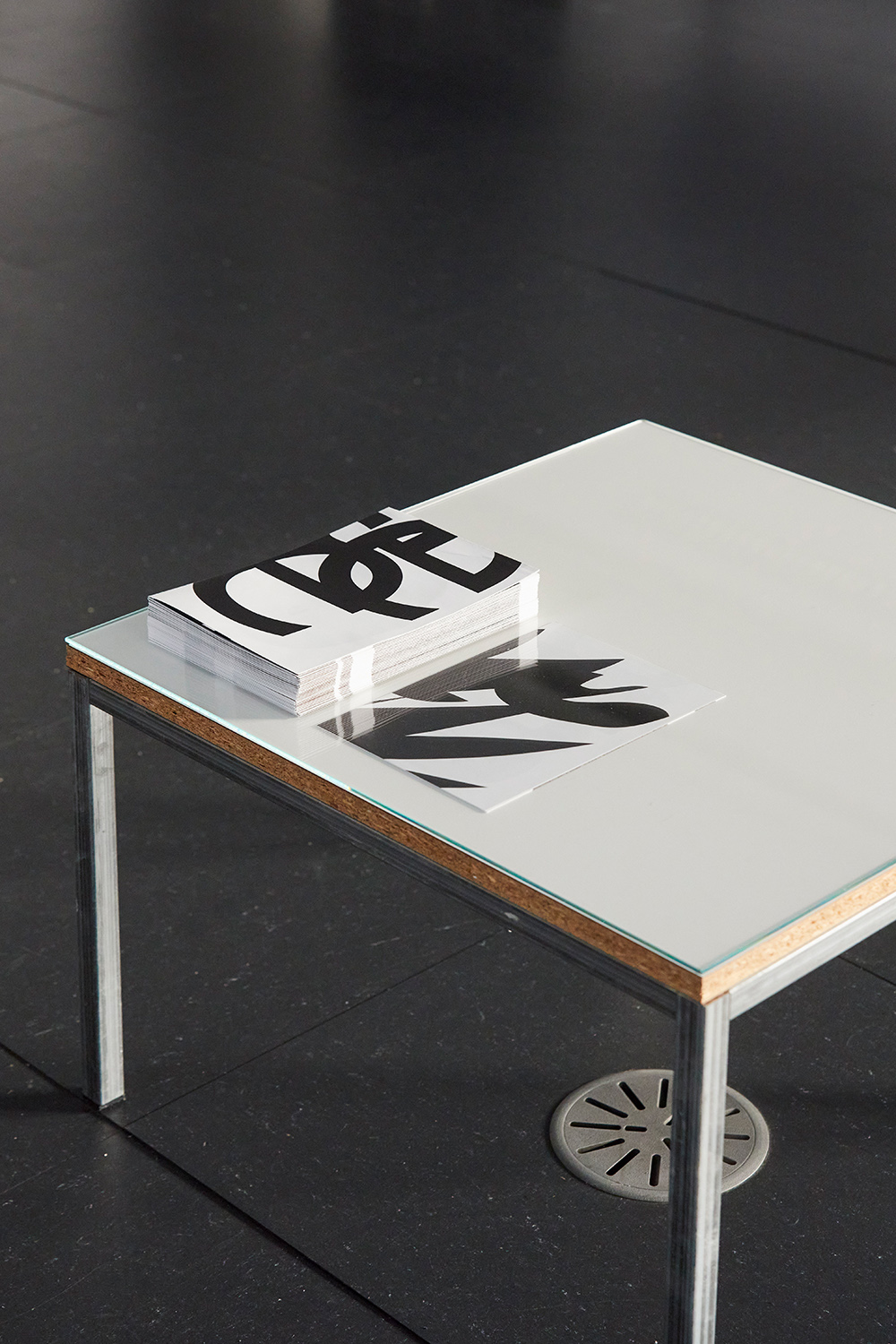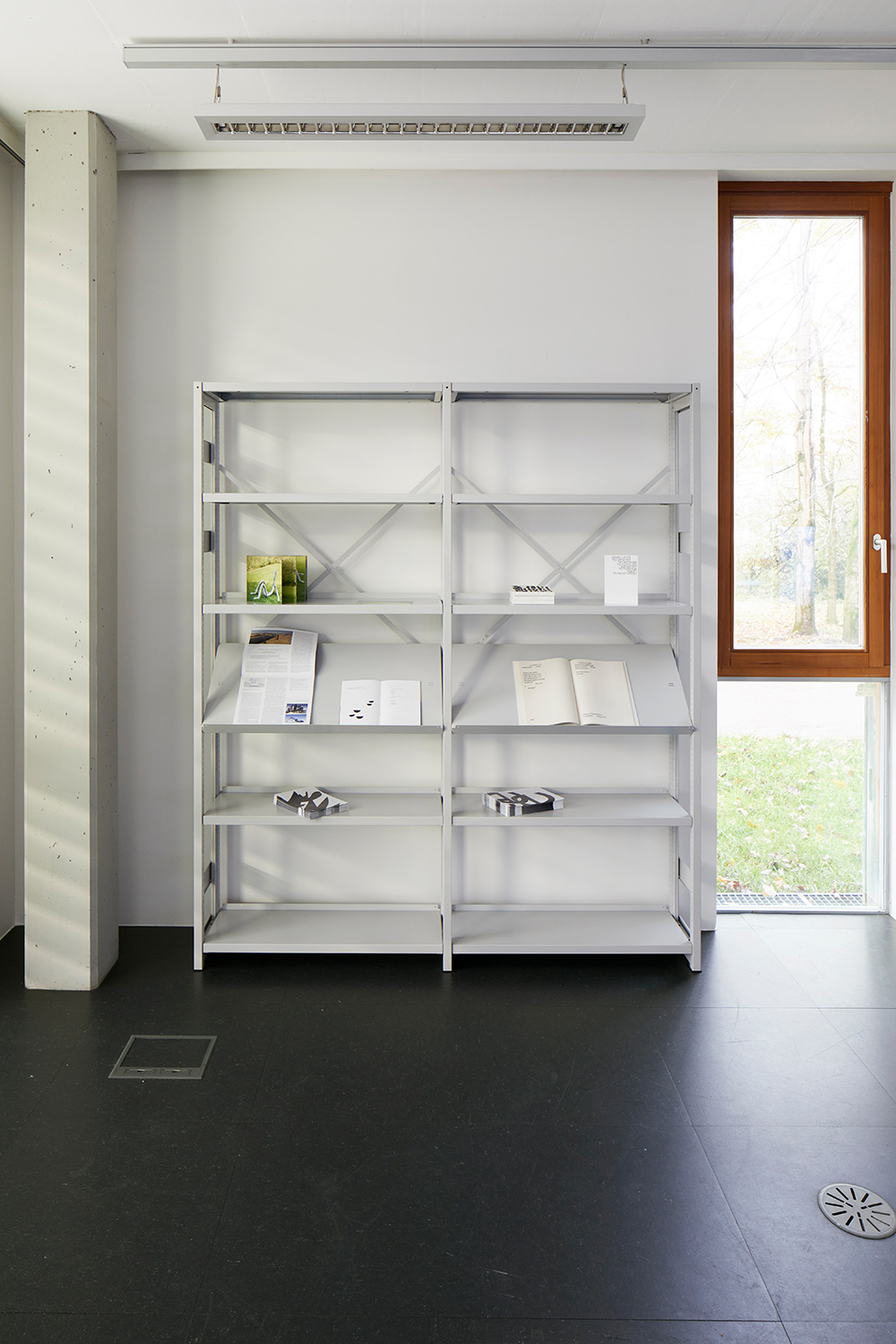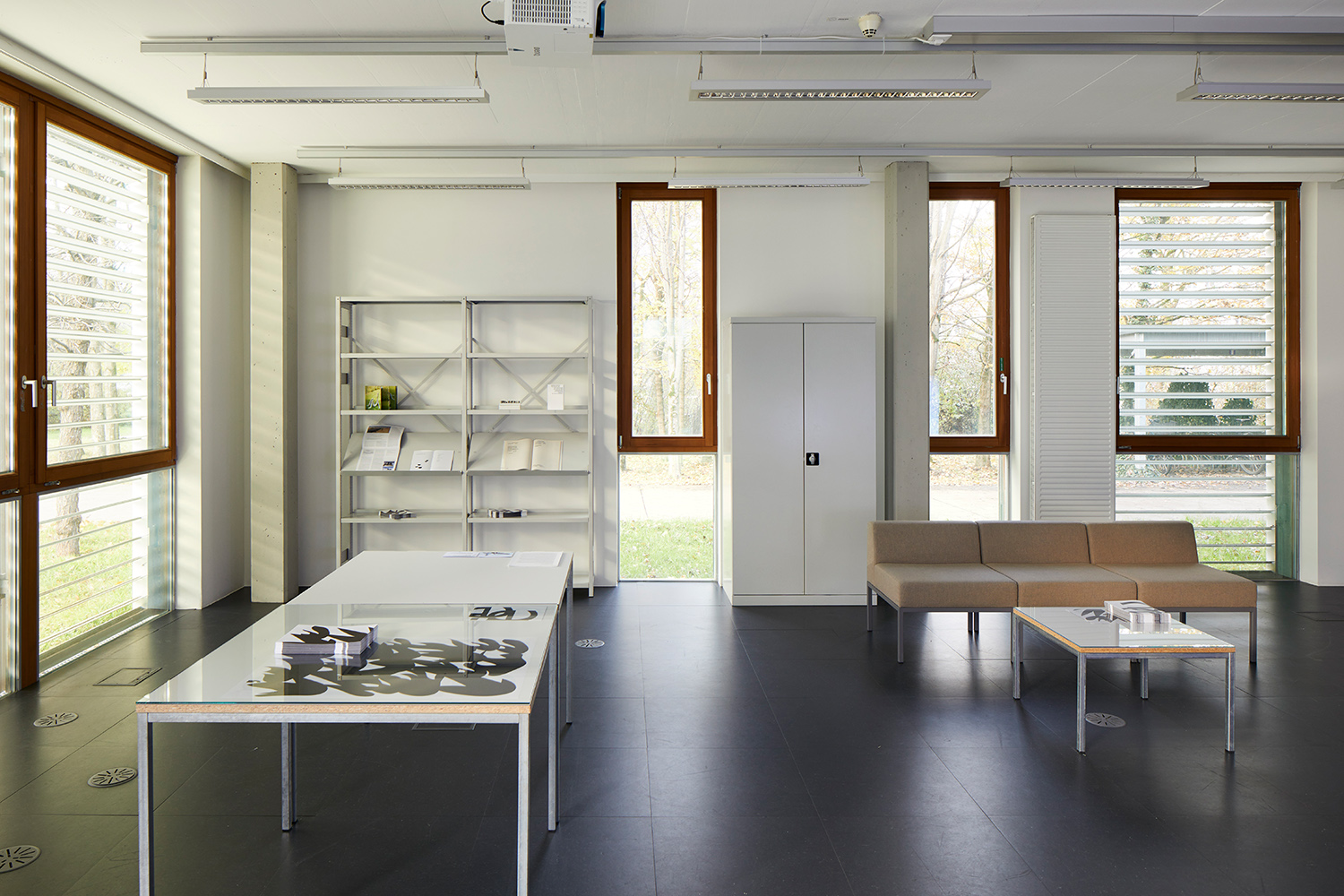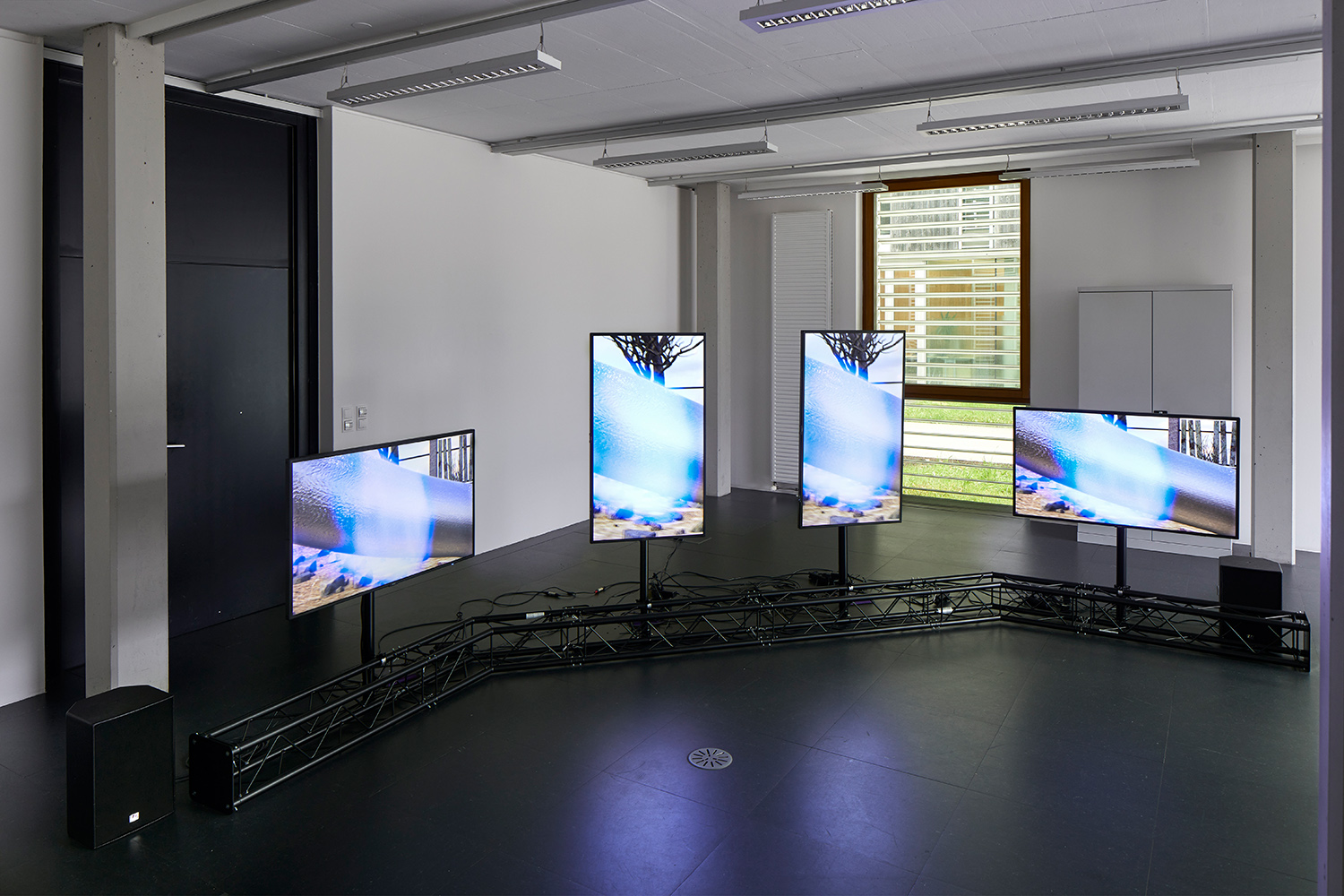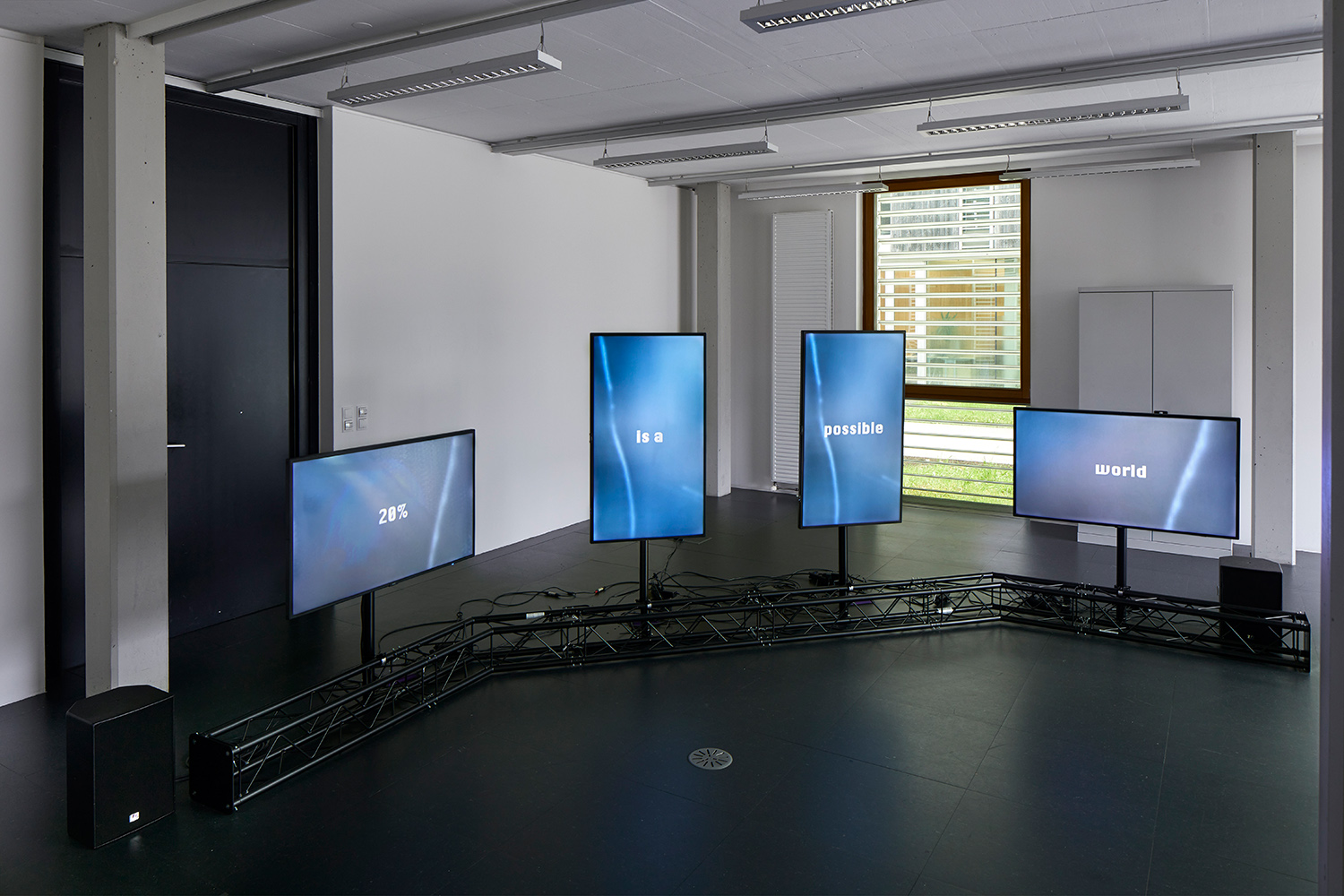Opening, November 21, 2023, 7 pm
Exhibition, November 22, 2023 – January 12, 2024
“Above and below, left and right do not merely denote physical points of orientation,” writes philosopher Jule Govrin, “but also social relations and political conditions: Above and below signify power and powerlessness, domination and subjugation. The body itself becomes the template for the power relation.”* Barbara Kapusta’s multidimensional view of twenty-first-century social contexts is always guided by the body. Her installations, videos, sound works, ceramic sculptures as well as language-based works defy clear classification. In our postdigital condition, in which the digital has advanced to such an extent that all spheres of life are permeated by codes and it is impossible to identify a before, the body seems to have become the last site where analog and digital patterns collide.
“In connection with our bodies,” says Barbara Kapusta, “the question arises of how politics exerts pressure on them, how it inscribes itself into bodies. Hence, technobodies and thoughts about their materiality play a key role in my work. We are all technobodies, whether autonomous or heteronomous. We are operated on, wear prostheses, medicate ourselves, and hormones are everywhere anyway.”** From this interaction of bodies with technical alien bodies, the amalgamation of distinct entities into something indivisibly new, emerge topoi of the technological, which the artist investigates as an aggregate of tools and processes in speculative settings often inspired by the literary genre of science fiction.
In the video installation Solar (2022/2023), elongated metallic bodies move sluggishly and awkwardly through a landscape devastated by past abuse. It is the manifestation of social toxicity: the product of an economy centered on neoliberal ideals such as performance, growth, and progress, of extractive capitalism and concomitant politics that have unduly negated urgent measures to combat the climate crisis. In an utterly torrid environment, branches of withered trees claw feebly into the sky. The dream of the family home loses its plaster in this desert, as if shedding its skin after a sunburn. Underneath, another blistered layer. The earth is cracked and fissured. No traces of water, only drought and dust. Few plants have adapted to survive amid the dilapidated garden fences, crumbling sidewalks, and rotting porches of this former idyll. In Solar, the private home in the green becomes a symbol for a society of individualization, separation, and isolation, which has reached its logical end. Bodies roam, genderless, faceless. The smoothness of their surfaces reflects the inhospitable surroundings. They serve as mirrors.
In the installation encompassing the entire exhibition space, four synchronized videos flicker from trusses. These metal supports fulfill a double function: on the one hand, they frame a stylized view out of the windows of a single-family home in the not all-too-distant future—the artist’s animation of a ruined landscape with its lethargic drifting protagonists. On the other, the structures seem to prop up this house the exhibition visitors have entered, saving it from collapse, a temporary makeshift before the final decay causes its very last beam to fail. One of the figures from the video shares the space with the visitors, something more-than-human, a sculpture. Positioned in front of a large display window facing the outside space, the figure provokes a situation oscillating between observing and being observed. A conundrum that materializes the ambiguity of social relations. Where does the art space begin, where does the world end, which serves as a reference for the exhibited images and objects? Or: What is, what is imagined, what is unthinkable?
As a site and context-specific intervention, the exhibition Solar walks a thin line between moments of affirming technological promises and criticizing a technicist approach to nature. The immediate vicinity of Kunstraum Lakeside, which is part of a science and technology park, reiterates this ambivalence: research is conducted here on applications that might either enhance neoliberal structures, ones that are not beneficial to the community and even detrimental to the environment, or help to transform precisely these structures into a more sustainable future. The Kunstraum itself, a thorn in the flesh of the technology park, as it were, opens its doors for self-reflection, for thinking about futures that could be or actually are in development.
The dramaturgy of Solar veers off at certain points, when the video portrays a parallel world to the ruins: a doubled world of silhouettes and streams of light, a world consisting of processed heat, movement, and energy—a world of information. The digitally distorted, non-binary voice from off-screen speaks in the plural: “we are hosts of motion | heat and energy | 50% of our future is made up | 20% is a possible world | we look fondly at our capacity | a new sensibility for our generosity | is the core | of this community of energy.” The slow beings are having their say, human-like yet quite different. In the work, they return for a moment to a past they left behind a long time ago. They return from their community-based present, a present of energy beyond human imagination. From the viewer’s perspective, however, they also return from a potential future, our future, a vision that Barbara Kapusta conjures in her video and her artistic practice in general. Above and below, left and right—multidimensional and highly political.
Barbara Kapusta (b. 1983 in Austria) lives and works in Vienna.
www.barbarakapusta.net
* Jule Govrin, Politische Körper. Von Sorge und Solidarität (Berlin: Matthes & Seitz, 2022), 58. Translated for this publication.
** Barbara Kapusta in conversation with Paula Thomaka, “Wir sind alle Technobodies, selbst- und fremdbestimmt,” www.pw-magazine.com/2019/barbara-kapusta-wir-sind-alle-technobodies-selbst-und-fremdbestimmt. Translated for this publication.
